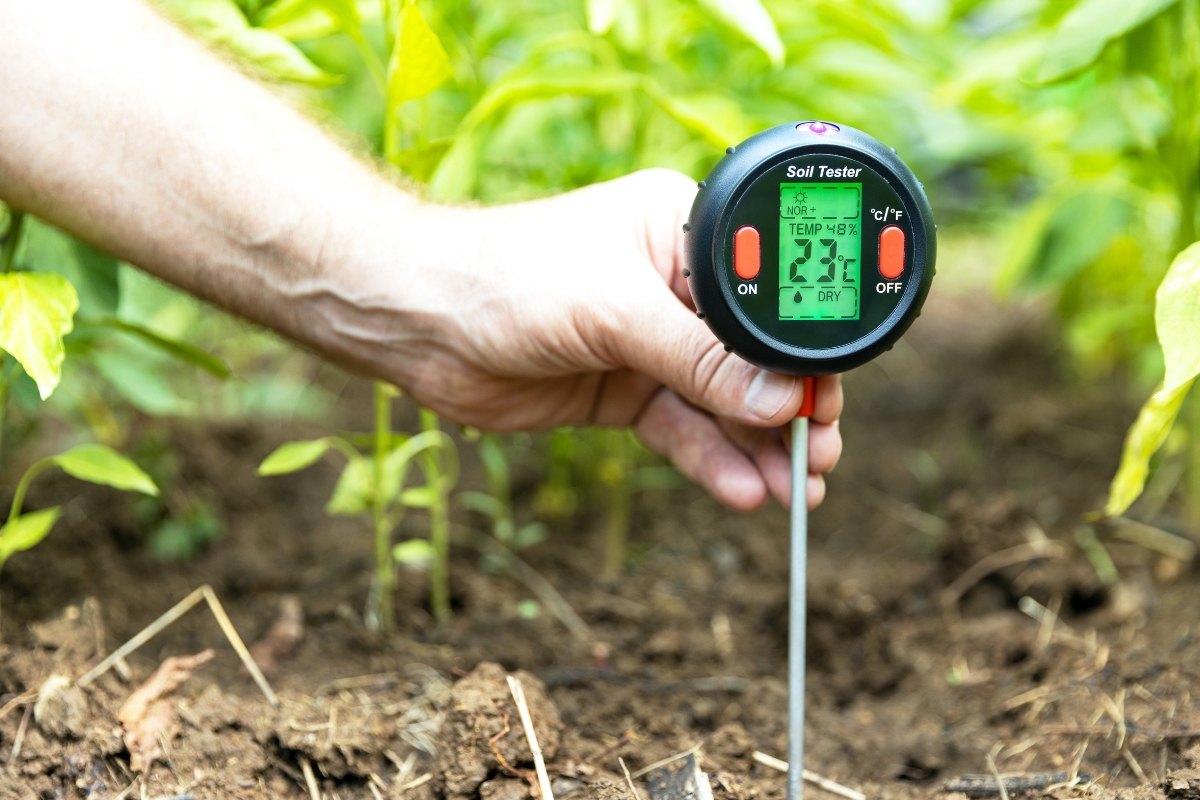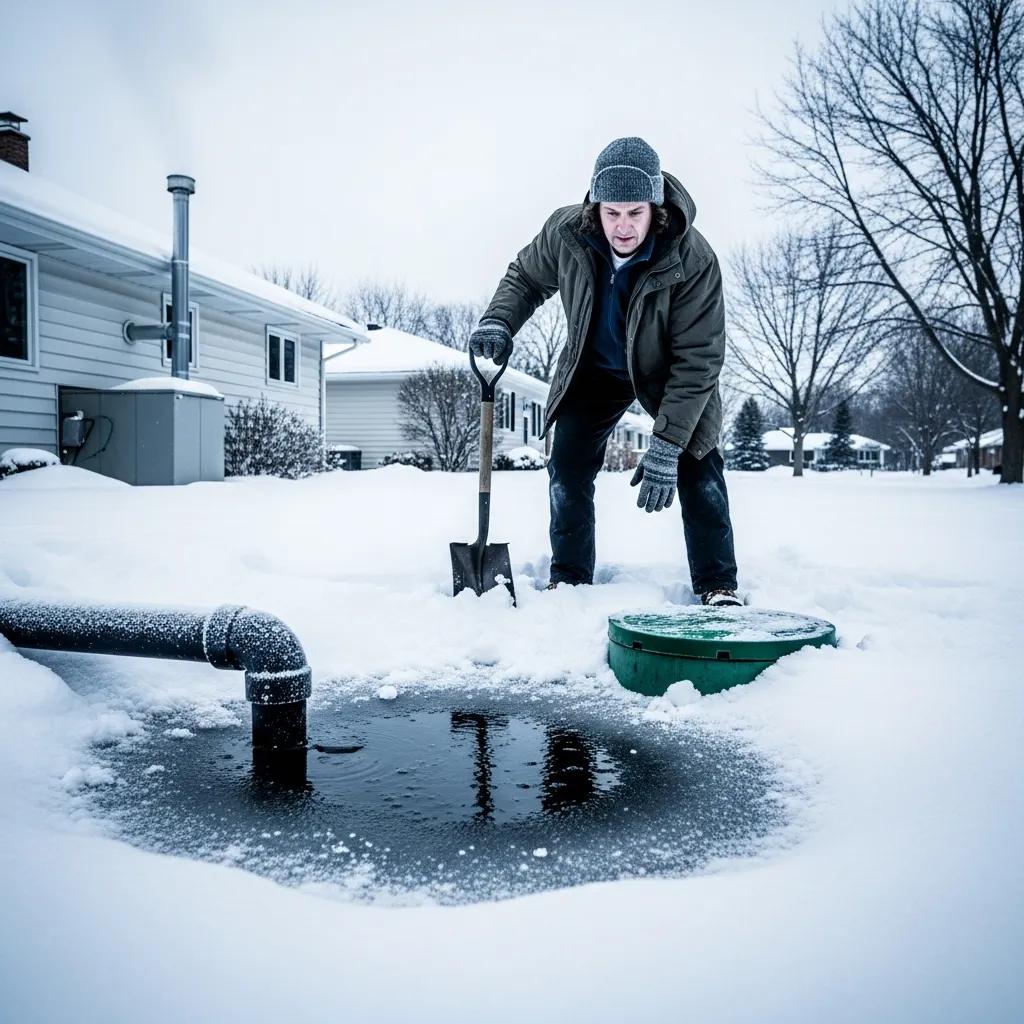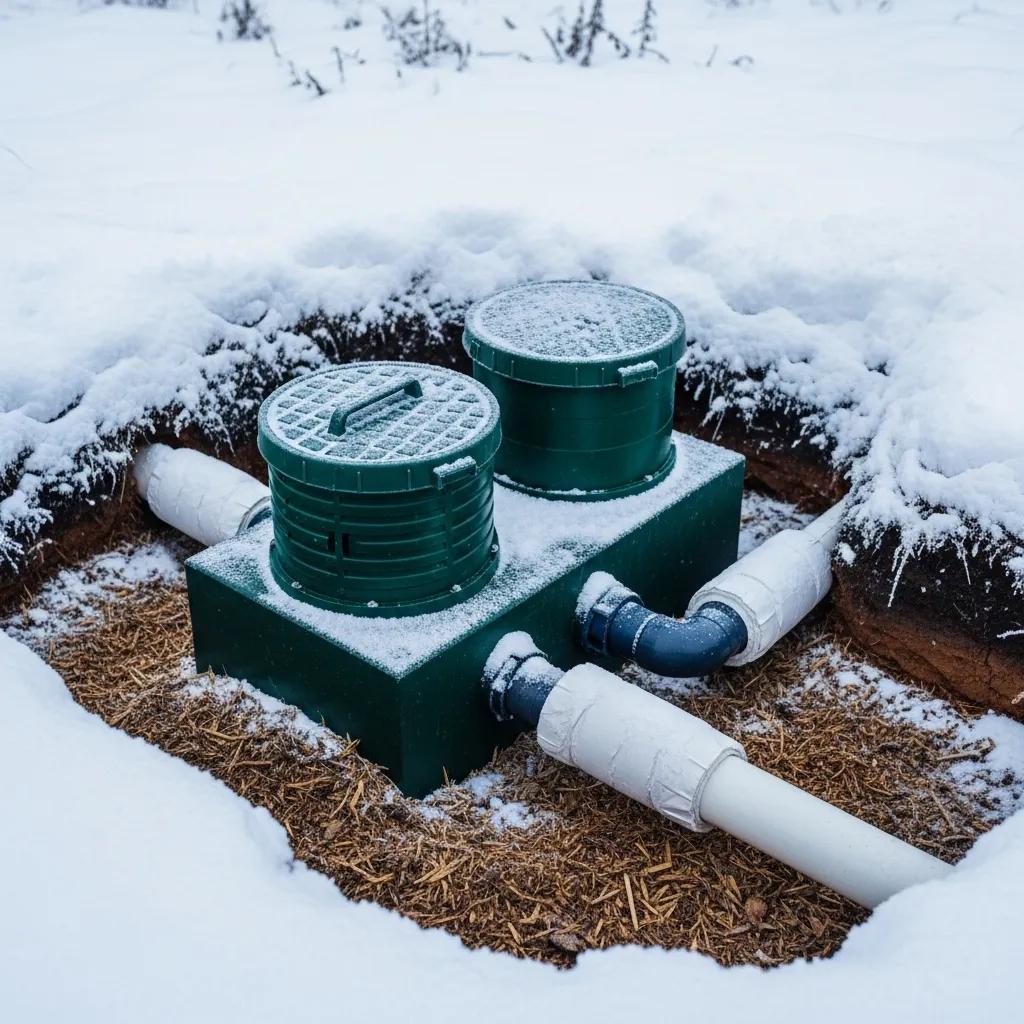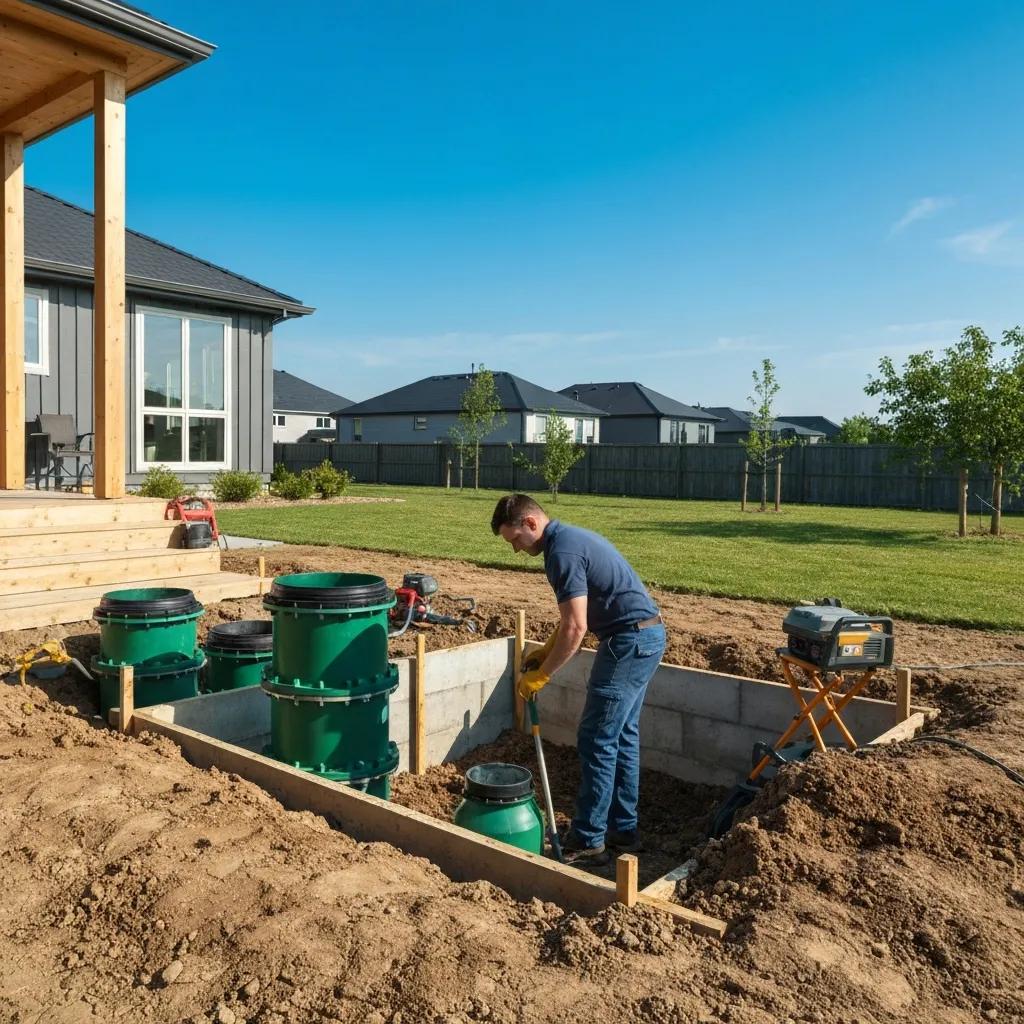If you’re planning to install a new septic system or make changes to an existing one, understanding how to conduct a percolation test is essential. Smart Septic Pros offers comprehensive guidance for homeowners and businesses in Metro Atlanta, handling everything from septic tank repairs to installations and ongoing maintenance.
With over a decade of experience, they ensure that your septic system meets local regulations and operates efficiently. Ready to get started? Keep reading to learn more about percolation testing and how it can impact your septic system approval process!
Key Takeaways of A Percolation Test for Septic System Approval
What Is a Percolation Test?

A percolation test, often referred to as a perc test, is crucial for evaluating how well soil absorbs water, which directly impacts septic system effectiveness. It helps determine the appropriate septic drain field size and placement that will safely manage sewage flow and prevent groundwater contamination.
For those involved in real estate investing, understanding the results of these tests can influence property values and rezoning decisions. A passing perc test indicates that the soil is suitable for a septic system, which assures prospective buyers that the setup can handle their waste management needs without causing issues. Problems with percolation can lead to costly pump repairs or even septic tank failures, making this test a vital step in any septic tank maintenance planning process.
Understanding the Purpose of Percolation Testing
Understanding perc testing is important for ensuring that wastewater is managed effectively. The soil test assesses soil texture, which determines how quickly water moves through the ground. Soil types like loam can often handle septic needs better than sandy or clay-heavy soils, making this test a must before installation. Contact Smart Septic Pros for septic tank maintenance.
| Soil Type | Water Absorption Rate | Typical Suitability for Septic |
|---|---|---|
| Loam | Moderate | Ideal for septic systems |
| Sandy | High | May require larger septic drain field |
| Clay | Low | Often unsuitable without modification |
The cost of a percolation soil test can vary based on the region and the excavation work needed, such as using an excavator to assess deeper soil layers. This upfront investment for home improvement is worthwhile, preventing future issues and ensuring a reliable septic system. Accurate percolation data streamlines installation and supports compliance with septic tank maintenance local regulations:
The Role of Percolation Tests in Septic System Planning
Percolation soil tests, or percolator tests, are a foundational step in septic system planning, especially when determining the ideal septic drain field location. These tests utilize soil science principles to evaluate how well water moves through the ground, which is crucial for effective wastewater management.
A licensed professional often conducts these tests to ensure compliance with local regulations and to avoid future complications with systems that may not perform well in wetland areas. Contact Smart Septic Pros for septic soil testing, septic tank maintenance and septic tank repairs.
Understanding the ins and outs of a perc test is just the start. Now, it’s crucial to know the right timing for when this test should happen to ensure your septic system functions smoothly.
When Should a Percolation Test Be Carried Out?

Timing plays a critical role when conducting a percolation soil test, especially for those seeking septic system approval. Choosing the right season is essential, as soil conditions can significantly affect results. Spring and early fall are often considered the best times, as they provide sufficient moisture in the soil without the risk of flooding. This ensures a more accurate assessment of how the soil will absorb effluent.
Additionally, planning the soil test well in advance of any septic system approval is vital to meet local regulations and address any potential environmental health concerns. By scheduling the test thoughtfully, homeowners and property developers can avoid unnecessary delays and ensure their septic systems function properly from the start.
Best Seasons for Conducting Percolation Tests
Choosing the best seasons for a septic tank percolation test is key to getting reliable results. Ideally, spring and early fall are perfect for conducting these tests. During this time, soil moisture levels are higher, allowing for better evaluation of drainage and absorption capabilities, which matter when planning the right drain size for an effective septic system.
| Season | Soil Moisture Level | Best for Testing |
|---|---|---|
| Spring | High | Ideal for accurate results |
| Early Fall | Moderate | Effective moisture balance |
| Winter | Low | Not recommended |
| Summer | Variable | Avoid during drought |
Conducting the septic tank percolation test at the right time allows for a thorough understanding of soil performance, which can prevent potential drainage issues down the line.
Timing Your Test Ahead of Septic System Approval
Timing a perc test wisely is critical for a solid septic system approval process. It’s best to avoid conducting tests immediately after heavy snow or rainfall, as saturated soil can lead to inaccurate results. A well-planned test in the right season—ideally when the soil comfortably absorbs sewage treatment wastewater—helps ensure that the local bacteria can thrive and efficiently process waste.
- Ensure the soil is adequately moist but not saturated.
- Avoid testing right after significant snowfall or rainfall.
- Schedule tests well in advance for properties with multiple acres.
Now that the timing for a percolation soil test is clear, it’s time to shift focus. Let’s explore what needs to be in place before diving into this essential testing process.
What Is Required Before You Carry Out a Percolation Test?

Before diving into a perc test, it’s important to ensure the site is ready for evaluation. Preparing the area involves checking the water table level and making sure the soil is accessible and free from debris. Necessary permissions should be secured prior to testing to comply with local regulations that govern septic service installations.
Property owners can start by consulting with experienced professionals who can guide them through preliminary steps, especially when searching for a “percolation test near me.” This groundwork sets the stage for accurate results and supports a smooth approval process for installing a septic system.
Preparing Your Site for a Percolation Test
Getting the site ready for a septic percolation test involves checking the surrounding area before any test takes place. The location should be clear of debris and have proper access to allow for equipment to reach the site, particularly if it’s rocky or sandy. It’s also crucial to note any streams nearby, as they can influence the drainage pattern and affect how sewerage is processed.
As the testing proceeds, measuring the diameter of the test holes becomes important to obtain accurate readings. The soil should be disturbed in a way that allows for even water distribution, enabling a better understanding of how well the sand or soil absorbs water. Preparing properly sets the foundation for a smooth perc test and helps ensure compliance with local regulations.
Necessary Permissions and Preliminary Steps
Before conducting a percolation test for septic system approval, property owners must obtain the necessary permits from local authorities. This step ensures compliance with regulations that can prevent costly failures down the line. Additionally, consulting with professionals can clarify how much gravel or fill may be needed depending on the test results, paving the way for a reliable waste management setup.
With all the necessary preparations in place, it’s time to take the next step. Let’s jump into the nitty-gritty of how to conduct a perc test!
How to Do a Percolation Test
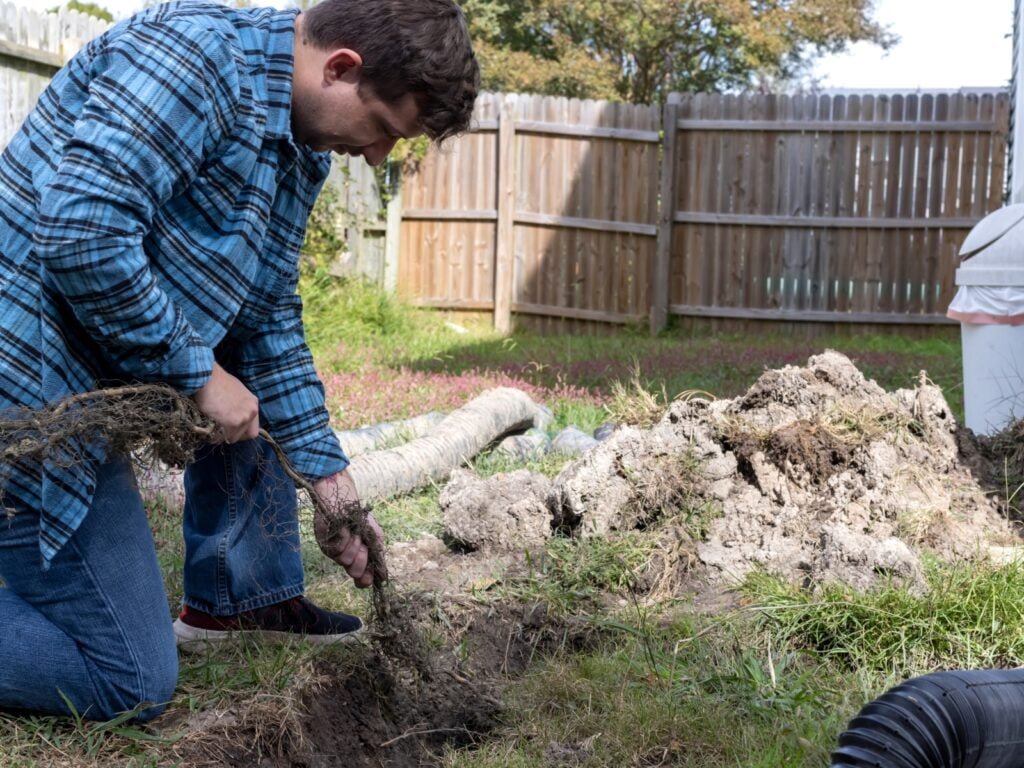
Getting a clear understanding of soil performance requires a straightforward approach to conducting a perc test. The process begins by using a shovel and digging test holes to the recommended depth—usually around six to twelve inches—based on local zoning regulations. Once the holes are ready, saturating the soil properly is vital, ensuring it has the necessary moisture for an accurate evaluation.
Following this, measuring the water absorption rate becomes essential, allowing property owners to gauge how well the soil, especially if it’s clay-heavy, can handle wastewater. Finally, recording and interpreting the results will provide valuable insights into whether the land is suitable for a septic tank installation, helping to ensure a smooth path toward a functional waste management solution.
Step 1: Digging Test Holes
To kick off the percolation soil test, the first step involves digging test holes that will serve as inspection points for the soil. Each hole should ideally reach a depth of around six to twelve inches, providing enough room to evaluate soil texture and drainage capacity. It’s also essential to clear the area of any organic matter and debris that may interfere with the results, ensuring the trench is clean for accurate testing.
| Step | Description |
|---|---|
| 1 | Dig test holes to a depth of 6-12 inches for inspection. |
| 2 | Remove any organic matter and debris from the trench. |
| 3 | Prepare for the perk land test that follows. |
Step 2: Saturating the Soil
Saturating the soil is a critical step in conducting a proper soil test for septic system approval. This process involves filling the test holes with liquid to the brim, allowing the soil to absorb moisture effectively.
Making sure the soil is adequately saturated helps in accurately surveying drainage capabilities and assessing the lawn’s suitability for sanitation needs, ensuring that the results of the fee paid for the test reflect the true condition of the site.
Step 3: Measuring Water Absorption Rate
After saturating the soil, it’s time to measure the water absorption rate, a vital step in evaluating permeability for the percolation test for septic system approval. Using a measuring stick or similar tool, property owners can note how quickly water levels drop within the test holes over a set period. This data is crucial for jurisdiction requirements, as it helps determine whether the land can adequately handle a septic system based on the soil‘s absorption capabilities.
Step 4: Recording and Interpreting Results
After completing the perc test, accurately recording the results is essential for making informed decisions about the site’s capacity for a septic system. By analyzing the data, property owners can gain valuable knowledge regarding the suitability of the land for handling wastewater, thus ensuring that it does not interfere with drinking water sources or the local sanitary sewer system. Understanding these outcomes helps to prevent potential issues, guiding homeowners toward compliant and efficient waste management solutions.
Once the perc test is complete, it’s time to check the results. A good outcome can make all the difference in choosing the right spot for your septic system!
What Is a Good Soil Percolation Test Result?
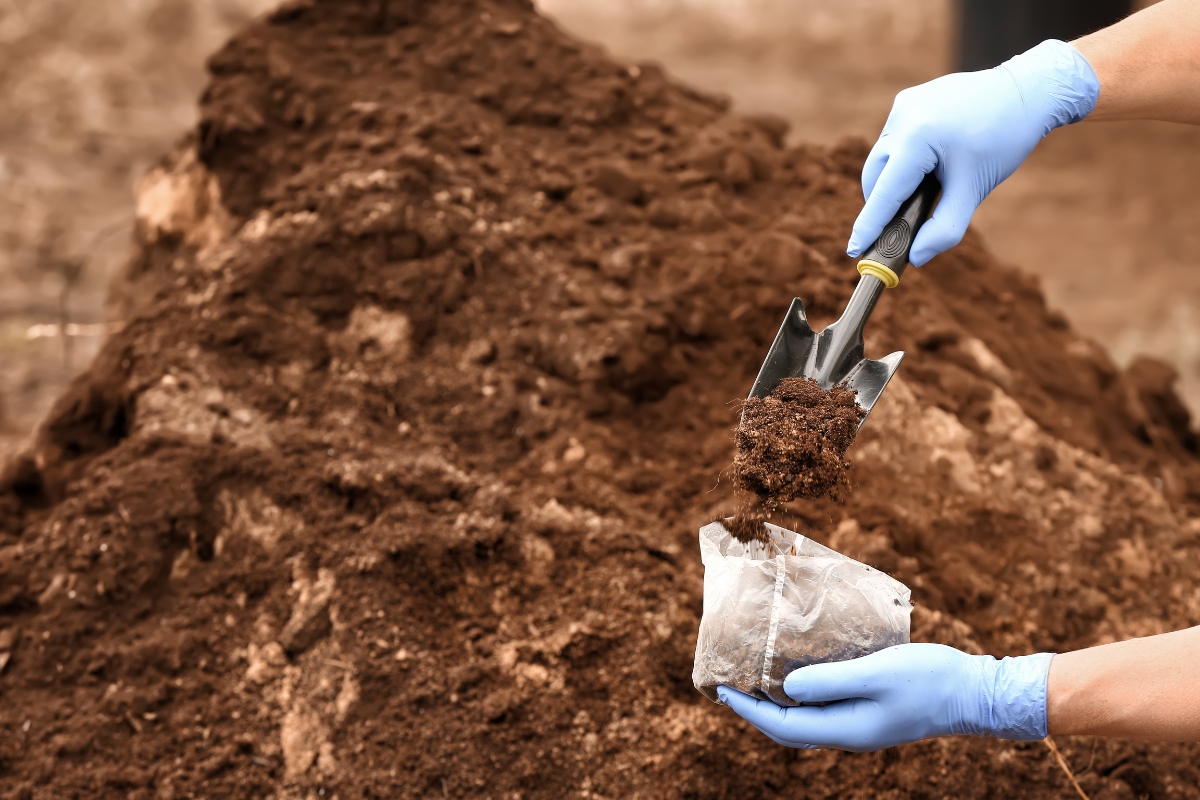
A good perc test result serves as a foundation for a successful septic system installation. Understanding the specific percolation rate requirements set by local health departments is key for any property owner or developer. The speed at which water moves through the soil determines how effectively a septic system can operate without issues, and these rates vary based on the soil type and conditions. Several factors can influence the outcomes of a perc test, including moisture levels in the soil at the time of testing, seasonal changes, and the depth of the test holes.
By grasping these elements, individuals can better assess the suitability of their site for a septic system and make informed decisions moving forward. This knowledge empowers property owners to ensure effective waste management while maintaining compliance with necessary regulations.
Understanding Percolation Rate Requirements
A perc test result is considered good when it falls within the acceptable absorption rates established by local health departments. Typically, different soil types have specific rate guidelines that indicate how quickly water should move through them, which is essential for proper septic system functionality. Understanding these percolation rate requirements helps property owners determine if their land can efficiently handle wastewater, ensuring compliance and preventing future issues.
Factors Influencing Percolation Soil Test Outcomes
Several factors can influence the outcomes of a perc test. For instance, the moisture content of the soil at the time of testing plays a significant role, as overly dry or saturated conditions can alter drainage results. Additionally, seasonal changes can impact soil characteristics, further affecting how quickly water moves through it and ultimately determining if a site is suitable for a septic system.
A perc test can reveal crucial information about your septic system’s suitability. But what happens if it doesn’t meet the mark? Let’s explore the options available after a failed perc test.
Failed Percolation Soil Test – What Are the Options?
When a perc test fails, property owners may feel uncertain about their options moving forward. But there’s no need to panic—there are viable alternative solutions for sites that don’t absorb water effectively. Often, homeowners can explore methods such as installing alternative septic systems or making soil amendments to improve drainage.
Additionally, they can consider re-testing or appealing the results, which can provide another chance for approval. Understanding these pathways can help navigate the next steps and ensure a suitable waste management plan is in place, even when initial tests don’t go as expected.
Alternative Solutions for Non-Percolating Sites
When a perc test fails, property owners should not lose hope. There are several alternative solutions that can help manage wastewater effectively, even on soil that does not absorb water properly. Options include using alternative septic systems like mound systems, which elevate the septic drain field, or implementing soil amendments to improve drainage properties.
- Consider alternative septic systems, such as mound systems, to manage effluent.
- Explore soil amendments that enhance drainage capabilities.
- Retest the soil or appeal the results for a second opinion.
Re-Testing and Appeals: Next Steps After Failure
In cases where a perc test yields a failing result, re-testing can offer a fresh chance for approval. Property owners can address any environmental or soil preparation issues that might have impacted the initial assessment before scheduling a follow-up test. Consulting with professionals can also provide valuable insights, increasing the likelihood of improved results and getting the septic system plan back on track.
A failed perc test can feel like a hurdle, but there are still steps to consider. Ready to find out who can conduct this crucial test?
Who Can Do a Percolation Soil Test?
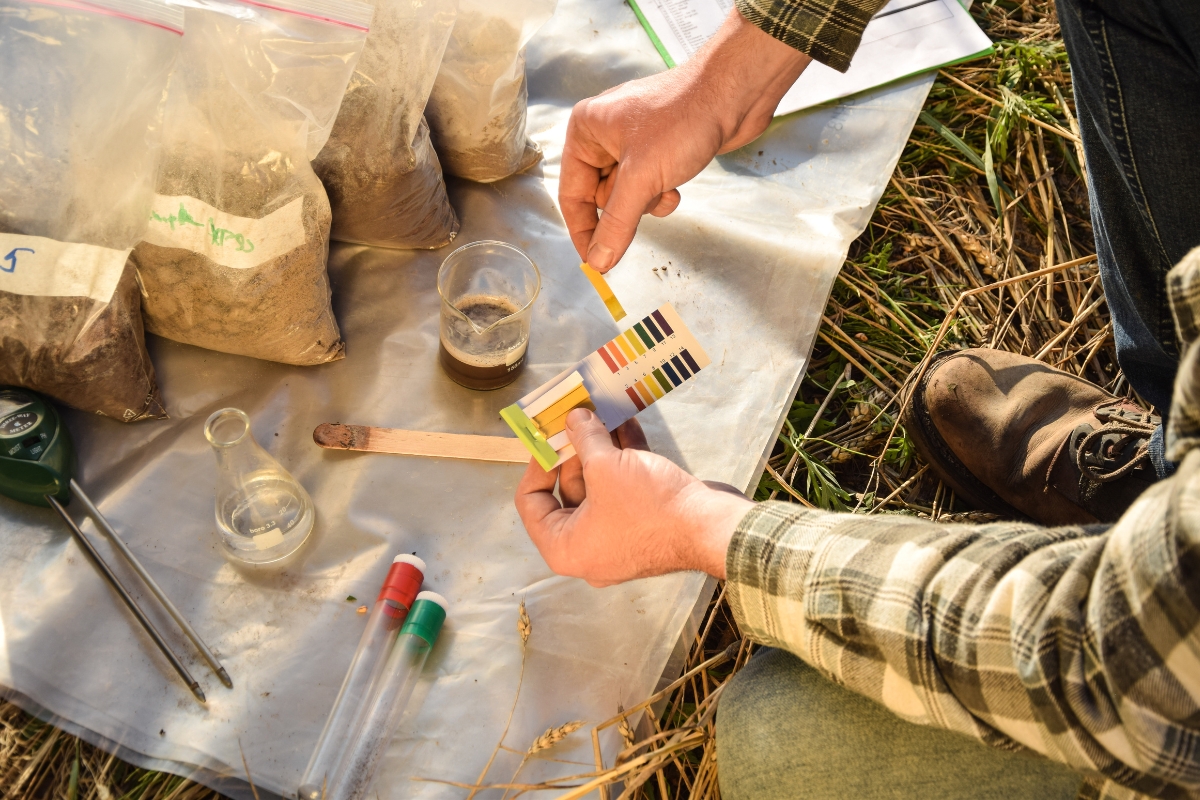
When it comes to perc tests, the qualifications of the person conducting the test play a significant role in achieving reliable results. Many homeowners wonder whether they should attempt to handle the testing themselves or hire a qualified professional.
Understanding the specific skills and experience needed for this task can help property owners make an informed decision. Professional testers bring valuable knowledge about soil science and local regulations, ensuring compliance and accuracy.
On the other hand, doing it yourself can save money but might lead to complications if not executed properly. Weighing these options carefully helps in determining the best path forward for septic system approval.
Qualifications for Conducting Percolation Tests
Conducting a perc test requires a solid understanding of soil science and local regulations, which is why many homeowners prefer hiring qualified professionals for the job. These experts possess the skills necessary to interpret soil conditions accurately, ensuring compliance with all relevant guidelines. While some individuals may attempt to conduct the test themselves, the risk of errors could complicate the approval process, making professional assistance a wise choice.
Hiring a Professional Versus DIY Testing
When deciding between hiring a professional for a perc test or attempting to do it oneself, weighing the pros and cons is important. Professionals bring a wealth of knowledge, ensuring accuracy and compliance with local regulations, which can save property owners from potential issues down the line. On the other hand, DIY testing can appear more budget-friendly but could lead to costly mistakes if done incorrectly.
| Option | Pros | Cons |
|---|---|---|
| Hiring a Professional | Expertise in soil science ensures accurate results | Higher cost associated with hiring services |
| DIY Testing | Cost-effective for budget-conscious individuals | Risk of errors leading to complications |
Ultimately, the choice depends on the homeowner’s comfort level with the process and their readiness to deal with any potential pitfalls.
Once you know who can perform a perc test, it’s time to consider the financial side of things. Let’s dive into the details: how much does a percolation test really cost?
How Much Does a Percolation Test Cost?

Determining the cost of a perc test is essential for homeowners and property developers alike. Factors such as location, soil type, and required equipment all play a part in the final price. It’s vital to understand these cost factors to manage budgets effectively while ensuring compliance with local regulations. By learning how to estimate costs and discovering potential ways to save, individuals can ensure their septic system approval process stays both efficient and affordable.
Estimating the Cost of Your Percolation Test
Estimating the cost of a perc test can vary from one location to another, largely influenced by local labor rates, the type of soil, and the equipment required for the job. Homeowners should typically expect prices to range anywhere from $300 to $1,000, depending on these factors and any additional site preparations that may be necessary. Researching and obtaining quotes from local services can help in budgeting correctly for this essential step in the septic system approval process:
- Consider regional pricing variations.
- Factor in potential soil conditions affecting testing costs.
- Request quotes from multiple septic service providers.
Cost Factors and How to Save
The cost of a perc test can vary widely based on factors like location, soil conditions, and the equipment necessary for the job. Homeowners should be aware that regional pricing differences can significantly impact overall expenses, so it’s wise to research local service providers for the best deal.
Additionally, taking the time to prepare the site beforehand can reduce septic costs by minimizing the amount of labor required during testing:
- Research regional pricing to understand local averages.
- Prepare the site by clearing debris and ensuring access.
- Request multiple quotes from different septic service providers.
Expert Advice on Percolation Tests for Your Septic System
If you’re looking for a septic percolation test in Kennesaw, Acworth, Marietta, or the metro Atlanta area, contact Smart Septic Pros today for expert advice on performing a percolation test to ensure the optimal functioning of your septic system. Conducting a percolation test is crucial for obtaining approval for your septic system installation or repair.
Smart Septic Pros’ experienced professionals can guide you through the process, helping you determine the best location and method for conducting the test. Don’t hesitate to reach out to Smart Septic Pros to ensure the efficiency and longevity of your septic system.
